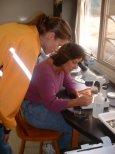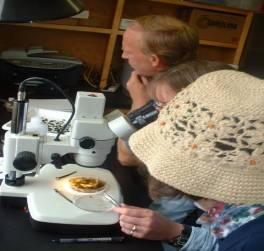Training Description
Value of Citizen Monitoring
Impact on Community
Cooperative Effort
Why Get Involved?
The natural environmental systems of filtering water, cleansing the air, providing bank stability and maintaining the natural food cycles become less available and taxed as our natural habitats and open land areas are lost or destroyed by development and urbanization.  The condition of the water bodies and water quality is directly tied to the condition and functioning of these environmental systems.
The condition of the water bodies and water quality is directly tied to the condition and functioning of these environmental systems.
No one would challenge the importance of water to San Diego County. As a semi arid region, 90% of our water is imported. Our tourist industry provides a major source of revenues to San Diego's economic well being. Water, water activities and its aesthetics are focal points to the industry. And yet, of all our water bodies, streams, lakes, lagoons and ocean, only 10% of these bodies are being assessed. That means that we do not know whether 90% of our water bodies are supporting the beneficial uses of water. Without assessment and understanding of the impacts of growth and use, it is very difficult to craft viable and sustainable solutions.
The US Environmental Protection Agency and the State Regional Water Quality Control Board, understanding the serious consequence of poor water quality, have mandated cities to guarantee good water quality. But here is the catch 22. Currently, cities are strapped with a lack of resources and personnel to complete the task of proper assessment.
Few residents understand the interrelationship between the environment and their personal “quality of life". A recent telephone survey of 800 households conducted for the North County Storm Water Education Group revealed that less than 25% of those surveyed knew that beach closure warning sign postings were due to polluted runoff and sewage spills which both affect water quality.
Training Description
The Watershed Stewards Training is designed to get you involved. Each day is hands-on, working collaboratively, exchanging ideas and learning new skills. Sessions are designed around a discussion format.
The WST is a three-day training that compliments the Stream Team model by providing participants with a tour of the Agua Hedionda Creek watershed from the headwaters to the ocean. 
- Day 1: On the tour participants are shown the potential sources and types of pollution, and the possible cumulative impacts of a variety of land-uses, the pros and cons of storm and flooding solutions utilized by different cities.
- Day 2: The training is in physical, chemical and biological assessment techniques.
- Day 3 Participants learn to identify macro-invertebrates, their structural features and how their presence or non-presence serves as an indicator of water quality.
What is the value of citizen monitoring?
Citizen monitoring programs are available in many states. The Global Rivers Environmental Education Network (GREEN) is an international organization, located in Michigan, whose primary purpose is to protect water quality and water resources internationally. GREEN provides resources for program development, environmental education, and data banking. The Chesapeake Bay Foundation, Isaak Walton Foundation and others have been models of effectiveness of citizen monitoring programs. It is important to note that most of these programs are in the East.  Many of these programs and their data have become influencers in land use and environmental program planning for the cities within the watersheds that are monitored. As an example, the Chesapeake Bay once containment for urban and industrial pollution is significantly cleaner today as a result of the efforts of their citizen-monitoring program. Recreational and fisheries activities are thriving because of the change in water quality.
Many of these programs and their data have become influencers in land use and environmental program planning for the cities within the watersheds that are monitored. As an example, the Chesapeake Bay once containment for urban and industrial pollution is significantly cleaner today as a result of the efforts of their citizen-monitoring program. Recreational and fisheries activities are thriving because of the change in water quality.
What is the impact to the surrounding communities?
WST will be offered to all residents, local conservancies and employees of the municipalities in an effort to organize citizen groups throughout the CHU. The information that is gathered will assist in the protection of the water quality of North County's four lagoons and coastal environments. Since the CHU consists of waterways crossing jurisdictional boundaries, when waterways are protected water and other natural resources are also protected. Everyone wins and benefits.
Cooperative effort
The Watershed Stewards Training (WST) was developed in 2001-02 through the collaborative efforts of the Agua Hedionda Lagoon Foundation, the University of California Natural Reserve System, Communities Alive in Nature, and the Carlsbad Watershed Network. The WST program uses the Stream Team's, core one-day training in physical, biological and chemical assessment. The WST also draws from the GREEN (Global Rivers Environmental Education Network) environmental education and citizen monitoring program resources.

